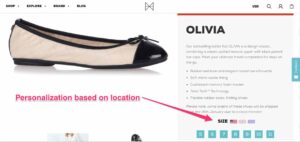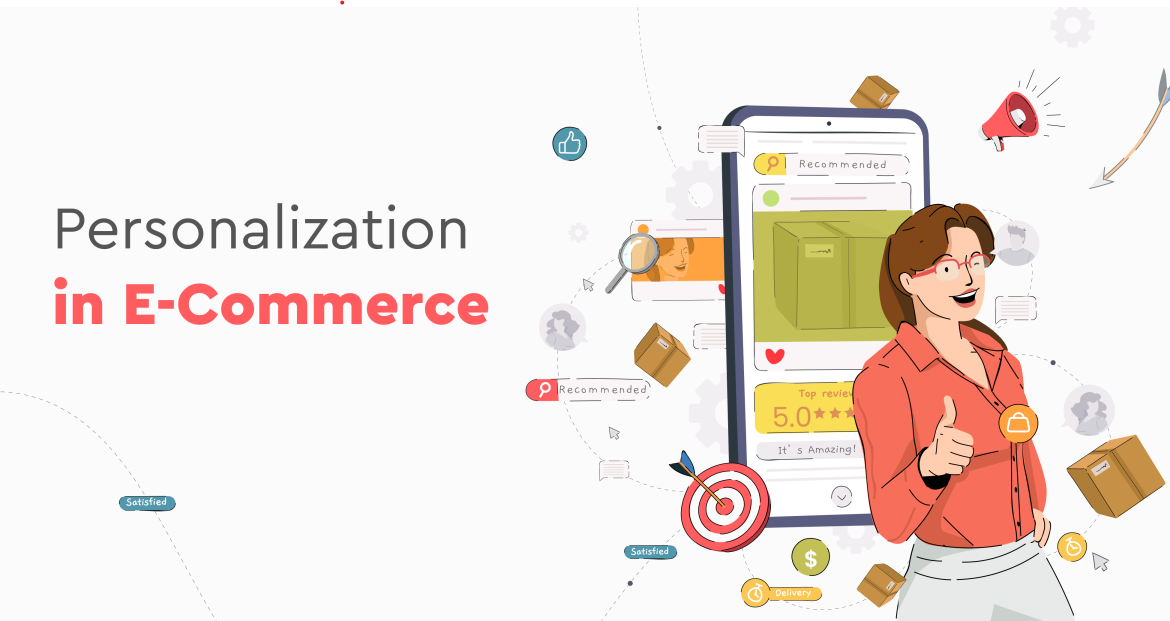Understanding personalization in e-commerce is pivotal to unlocking significant sales potential and fostering deeper customer relationships. Personalization refers to the tailored shopping experience that caters to individual customer preferences, behaviors, and needs. This approach goes beyond merely addressing customers by their first names; it involves leveraging data analytics and artificial intelligence to create a highly customized shopping journey.
Imagine visiting an online store where the homepage greets you with products aligned with your past purchases and browsing history. Items that pique your interest are prominently displayed, while irrelevant options fade into the background. This is the hallmark of effective personalization—utilizing algorithms to analyze customer data and predict what each shopper will find appealing.
Moreover, personalization extends to email marketing, product recommendations, and even targeted ads, ensuring that the right message reaches the right person at the right time. For instance, a customer who frequently buys athletic gear may receive an email highlighting the latest running shoes or exclusive discounts on performance apparel.
This tailored approach not only enhances the overall shopping experience but also cultivates brand loyalty. When customers feel understood and valued, they are more likely to return, make repeat purchases, and even advocate for your brand within their social circles. In an era where consumers are inundated with options, personalization acts as a powerful differentiator, driving engagement and ultimately unlocking sales in the competitive e-commerce landscape.
Benefits of personalization in e-commerce
Increased conversions: Personalization plays a pivotal role in converting casual browsers into buyers. Customized recommendations and targeted promotions often lead to higher engagement and an increased likelihood of purchase. For example, when customers receive product suggestions based on their browsing history or past purchases, they are more likely to buy—boosting conversion rates and average order values.
Enhanced customer loyalty: Personalization helps foster stronger customer relationships by making shoppers feel valued. When a brand remembers a customer’s preferences, acknowledges their past interactions, and tailors’ communications accordingly, it builds trust and long-term loyalty. Repeat customers are not just more likely to purchase again, but they’re also inclined to become brand advocates.
Improved customer experience: A personalized shopping journey ensures that customers see only relevant content, products, and promotions, enhancing their experience and reducing the chances of feeling overwhelmed. This relevance leads to higher satisfaction, setting the brand apart from competitors offering a more generic approach.
How personalization works

At its core, personalization relies on data. Companies use customer data such as past purchases, browsing behavior, demographics, and even real-time interactions to understand what individual customers want. Advanced technologies like AI and machine learning analyze these data points to predict future behavior and tailor recommendations accordingly. Here are a few practical applications:
Personalized emails: Emails that feature recommended products, exclusive discounts, or content based on a customer’s interests typically see much higher engagement rates.
Targeted promotions: Custom offers based on a customer’s past purchases or browsing patterns encourage repeat buying.
Dynamic content: Websites that adapt in real-time to showcase relevant products, categories, or messages can offer a unique and engaging experience.
Strategies for implementing personalization in e-commerce
Implementing personalization in e-commerce can significantly enhance the customer experience and drive sales. The key is to leverage data and technology to tailor each interaction to individual shoppers. Here are some effective strategies to consider:
1.Data-driven insights: Start by collecting and analyzing customer data. This includes browsing behavior, purchase history, and demographic information. Use this data to segment your audience into distinct groups based on their preferences and shopping habits. For instance, a customer who frequently buys outdoor gear might appreciate personalized recommendations for camping equipment or seasonal sales on hiking apparel.
2. Personalized recommendations: Utilize algorithms to create personalized product suggestions on your website. When a customer views a product, show them related items that others have purchased together. This not only enhances their shopping experience but also increases the average order value. Dynamic recommendations can be placed on product pages, in shopping carts, or during the checkout process.
3. Tailored email campaigns: Email marketing remains a powerful tool for personalization. Use the data you’ve gathered to send targeted emails based on customer behavior. For example, if a customer abandoned their cart, send a reminder email featuring the items they left behind, possibly paired with a discount code to encourage completion of the purchase. Additionally, consider sending personalized birthday offers or exclusive deals based on their shopping history.
4. Customized landing pages: Create unique landing pages for different customer segments. When users arrive at your site, they should see curated content that resonates with their interests. For instance, a visitor who often browses home decor might appreciate a landing page filled with the latest trends in interior design, complete with style guides and popular products tailored to their taste.
5. Interactive quizzes and surveys: Engage customers by offering interactive quizzes or surveys that help them discover products suited to their needs. Not only do these tools provide a fun and engaging experience, but they also gather valuable insights into customer preferences, allowing for more personalized marketing efforts.
6. Dynamic Content: Implement dynamic content on your website that changes based on user behavior. This could include greetings that address the customer by name, tailored banners that highlight special promotions relevant to their interests, or even showcasing products based on their location (such as seasonal items suited to local weather).
7. Customer feedback loop: Lastly, foster a culture of feedback where customers can voice their opinions about their shopping experiences. Utilize this feedback to refine your personalization strategies continuously. Over time, as you gather more insights, you can adapt your approach to better meet the evolving needs and preferences of your audience.
Challenges of personalization and how to overcome them
Privacy concerns
Challenge: Personalization depends on customer data, making it vital to respect privacy and protect sensitive information.
Solution: Be transparent about data collection practices and comply with privacy regulations (e.g., GDPR) to build customer trust and safeguard their information.
Data quality and integration
Challenge: Personalization is heavily dependent on data accuracy. Inconsistent, incomplete, or fragmented data across different platforms and channels can lead to incorrect or irrelevant recommendations.
Solution: Implement robust data integration and cleansing processes. Ensure all data sources are harmonized to provide a unified view of each customer.
Scalability issues
Challenge: Personalization may work well for a smaller customer base but becomes increasingly complex to scale as the business grows and the amount of customer data multiplies.
Solution: Invest in scalable AI-driven solutions that can handle increasing data volumes and generate personalized recommendations efficiently.
Over-personalization
Challenge: Too much personalization or overly repetitive recommendations can make customers feel overwhelmed or manipulated. It can also limit customer exposure to new products.
Solution: Strike a balance by using personalization without stifling diversity. Introduce periodic “exploration” recommendations alongside personalized content to broaden customer experiences.
Technological complexity and costs
Challenge: Implementing advanced personalization systems, such as AI-driven recommendation engines, can be technologically complex and expensive.
Solution: Start small and gradually build out personalization capabilities. Leverage modular systems or consider partnering with specialized vendors to reduce initial costs.
Customer resistance to automation
Challenge: Some customers may perceive automated personalization as impersonal or “creepy,” leading to distrust in your brand.
Solution: Incorporate transparency in data usage and leverage a blend of human-driven personalization strategies to show genuine care and a human touch in customer interactions.
Cross-channel personalization challenges
Challenge: Ensuring a seamless and consistent personalized experience across multiple channels (e.g., web, mobile app, in-store) can be difficult.
Solution: Use omnichannel strategies to create a cohesive customer journey and invest in technologies that enable seamless cross-channel data sharing.
Cultural sensitivity and ethical concerns
Challenge: Personalization strategies must be sensitive to cultural norms, preferences, and ethical considerations to avoid alienating or offending certain customer segments.
Solution: Conduct cultural and market-specific research to ensure personalized content aligns with customers’ values and beliefs in different regions.
Difficulty in measuring ROI
Challenge: Determining the direct impact of personalization efforts on sales and loyalty can be challenging, making it difficult to justify investments.
Solution: Establish clear metrics and A/B testing processes to measure personalization effectiveness and refine strategies based on performance data.
Evolving customer expectations
Challenge: As personalization becomes the standard, customer expectations continue to rise. Businesses may struggle to keep pace with increasingly sophisticated demands.
Solution: Stay agile and continuously adapt your personalization strategies based on evolving customer trends, feedback, and market insights.
The future of personalization in e-commerce
As technology evolves, the scope of personalization will continue to expand, with the potential for hyper-personalized, AI-driven customer journeys becoming the norm. For businesses, personalization isn’t just about driving immediate sales—it’s about building meaningful connections that translate into lasting customer loyalty.
In today’s competitive market, investing in personalization is an investment in your brand’s future. Tailored experiences make customers feel seen, heard, and valued—and that, in turn, drives sales and deepens loyalty.
